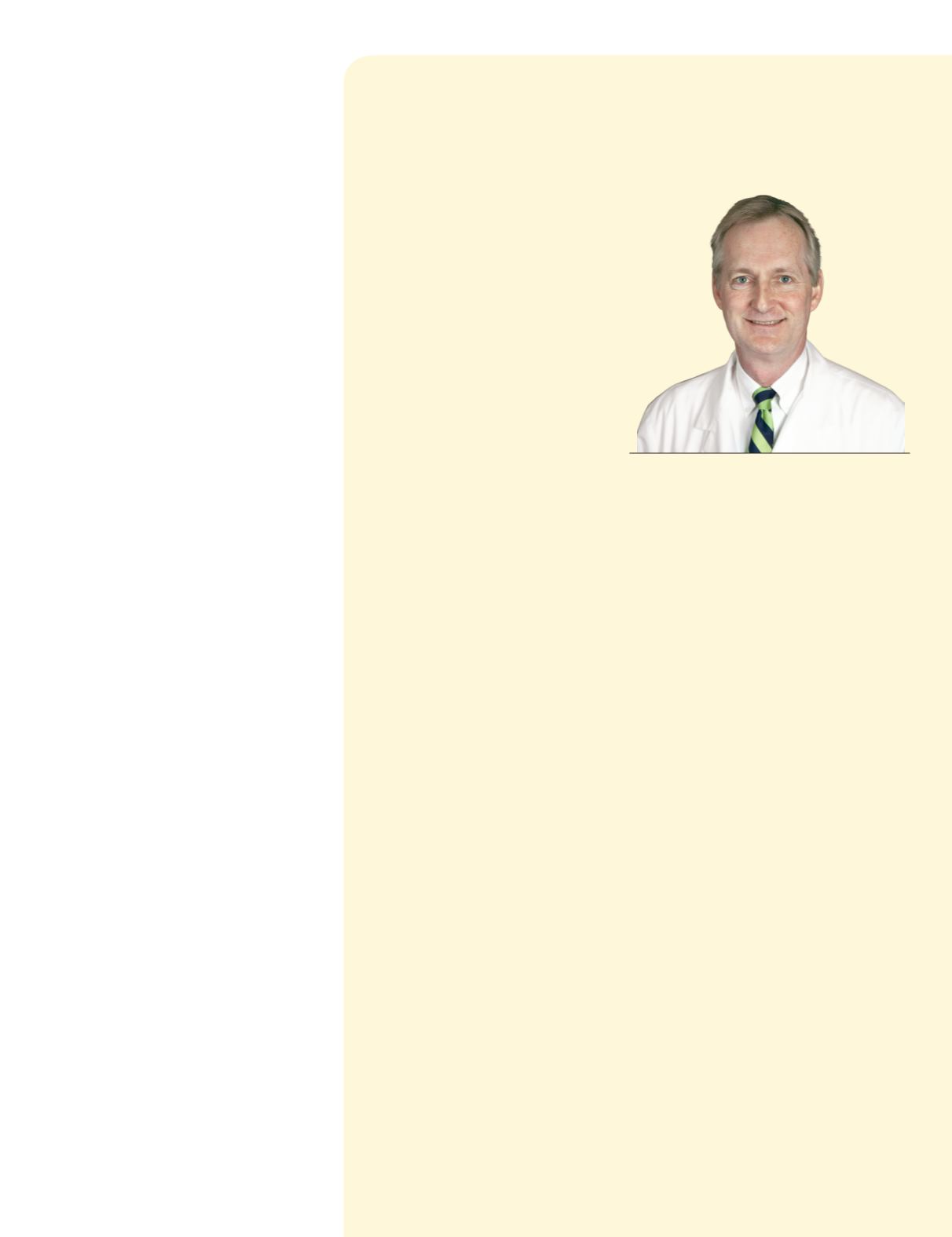

ARCHBOLD.ORG •
SPRING 2015
19
MEDICINES OFTEN
play a role in
keeping us well. But when misused, they
can also be dangerous. Taking too much
or too little of a medicine can harm
your health. And mixing some medi-
cines with other medicines is unsafe.
“Such problems are a big risk for
older adults, who tend to use more
medicines than younger people,” said
internal medicine physician James
Thomas, MD. “Research actually shows
that people 65 and older are twice as
likely as younger people to end up in
hospital emergency rooms because of
problems with medicine.”
Take with care
Dr. Thomas recommends following
these tips:
•
Know the names of all your medi-
cines and why you use them.
•
Write a list of all the medicines you
use, and take this list to doctor ap-
pointments. Include prescription drugs
and all your over-the-counter medi-
cines, such as cold and pain medicines.
Also include any vitamins or herbal
products you take. Having all your
prescriptions filled at one pharmacy
can also help.
•
Follow the directions. Don’t take more
or less of a medicine than advised.
•
Call your doctor if a medicine
doesn’t seem to help. You may need a
different medicine or dose.
•
Don’t stop using a medicine without
consulting your doctor.
•
Call your doctor if you develop any
problems after using a medicine. This
may include rashes, stomach problems
or any other side effects.
•
Don’t break up tablets or capsules
unless directed. This can affect how
well medicines work.
•
Never use anyone else’s prescription
medicine.
•
Turn on the light when it’s dark so
you can make sure you’re taking the
correct medicine.
•
Throw away outdated medicine.
Your pharmacist can tell you how.
•
Use a calendar or a pillbox to help you
take your medicines daily. Sticky notes
on the refrigerator can help.
Before using a newmedicine
If your doctor prescribes a new medi-
cine, ask:
•
How will it help me?
•
Are there any side effects I should
know about?
•
When should I use it, and how much
should I take?
•
Should I take it with food or before
or after meals?
•
Should I avoid certain foods?
•
What should I do if I forget to take it?
•
Where is the best place to store it?
Does it need to be kept cold?
Speak up
Be sure to talk to your doctor if you
have any concerns about medicines.
James Thomas, MD
Internal medicine physician
McIntosh Clinic
Smart, safe
medicine
SENSIBLE STEPS FOR TAKING MEDICINES
extent of the disease and other associ-
ated anatomical issues, for example a
septal deviation or turbinate hypertro-
phy, doctors may use a hybrid approach,
combining sinuplasty with other
traditional nasal and sinus surgery tech-
niques. As with any other surgery, there
are risks associated. Your doctor will care-
fully consider your candidacy for surgery
and for the technique recommended.
Another sinus surgery option is
traditional functional endoscopic sinus
surgery (FESS), which uses microdissect-
ing instruments such as drills and picks
to remove small amounts of bone and
blocked tissue, in order to enlarge the
natural sinus openings.
Both traditional FESS and balloon
sinuplasty use thin, lighted tools, called
endoscopes, that allow for improved
lighting and visualization in the nose.
Recently at Archbold Medical Center,
we have acquired a multidimensional
mapping system that increases safety
and efficiency during these surgeries.
This image guidance system allows
Dr. Williams to know precisely where
she is at any moment within the com-
plex sinus cavities as it is calibrated to
the patients’ CT or MRI scan obtained
preoperatively.
According to the American Rhinologic
Society, “balloon catheter sinuplasty
is minimally invasive and has many bene-
fits in the well-selected patient.”
•
It may be performed in the office
under local anesthesia.
•
Pain is usually minimal because often
there is much less cutting as the sinus
openings are widened with balloons.
•
There is quick return to normal activ-
ities, as there is minimal bleeding and
pain.
•
Results are consistently and safely ob-
tained and long-lasting in patients with
chronic or recurrent sinusitis.
So if you have chronic recurrent head-
aches or have had sinus pressure, pain or
infections for years, ask if you are a good
candidate for balloon sinuplasty.

















